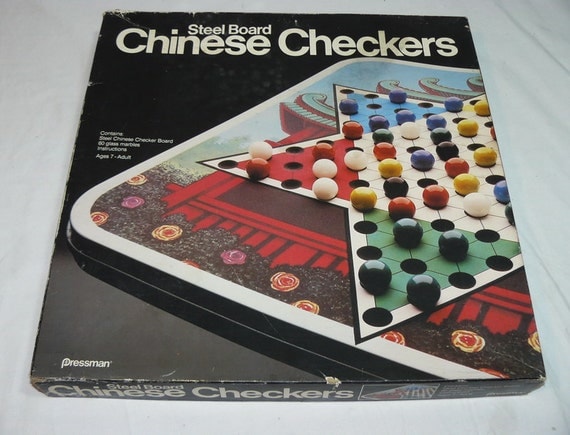


In a two-player game, each player plays one, two, or three sets of pieces. If two sets are used, each player controls two differently colored sets of pieces at opposite corners of the star. If one set is used, pieces race across the board into empty, opposite corners. In a three-player game, all players control either one or two sets of pieces each. The four-player game is the same as the game for six players, except that two opposite corners will be unused. The remaining players usually continue play to determine second- and third-place finishers, etc. The first team to advance both sets to their home destination corners is the winner. When playing teams, teammates usually sit at opposite corners of the star, with each team member controlling their own colored set of pieces. Starting layouts Six players Ĭan be played "all versus all", or three teams of two. (In some instances a player may choose to stop the jumping sequence part way in order to impede the opponent's progress, or to align pieces for planned future moves.) It is not mandatory to make the most hops possible. Red might advance the indicated piece by a chain of three hops in a single move. A hop consists of jumping over a single adjacent piece, either one's own or an opponent's, to the empty space directly beyond it in the same line of direction. In the diagram, Green might move the topmost piece one space diagonally forward as shown.

Turns proceed clockwise around the board. There is no capturing in Sternhalma, so pieces that are hopped over remain active and in play. A player may not combine hopping with a single-step move – a move consists of one or the other. Players take turns moving a single piece, either by moving one step in any direction to an adjacent empty space, or by jumping in one or any number of available consecutive hops over other single pieces. In "hop across", the most popular variation, each player starts with their colored pieces on one of the six points or corners of the star and attempts to race them all home into the opposite corner. (On bigger star boards, 15 or 21 pieces are used. Each player has 10 pieces, except in games between two players when 15 pieces are used. The aim is to race all one's pieces into the star corner on the opposite side of the board before the opponents do the same. I'd like to stress again that despite this being a really solid-sounding explanation, the author is anonymous and there are no sources to back up this claim, so it's not clear whether or not this is true.Īfter a great deal of searching, I did not manage to find a more authoritative source on the subject, so the true origins of why the game is called "Chinese Checkers" may remain a mystery.A single move can consist of multiple hops each piece hopped must be directly adjacent, and hops can be in any direction. The game was given a Chinese name and theme in keeping with the current interest in all things oriental (among them the discovery of King Tut's tomb in 1922 and the 'mah jongg' game that was introduced in 1923) The brothers Bill and Jack Pressman made up the name 'Chinese Checkers' during or shortly after 1928. This was exact the same game as the 1892 Star-Halma. The first Chinese Checkers game to be published in the United States was 'Hop Ching Checkers' in 1928 by J. The only thing that I could find was a history of the game on Pla圜, which despite sounding authoritative is written by an anonymous author who doesn't back its claims (not to mention has a website that looks like a GeoCities page from the 90s) and so the following passage should be taken worth a grain of salt: But there doesn't seem to be any solid information about why the name "Chinese Checkers" became associated with the game. The game itself was first released in 1892 in Germany as "Stern-Halma" (literally "Star-Halma"), indicating that it was a variation of Halma that was played on a star-shaped board. There seems to be surprisingly little information about the origin of the name "Chinese Checkers".


 0 kommentar(er)
0 kommentar(er)
